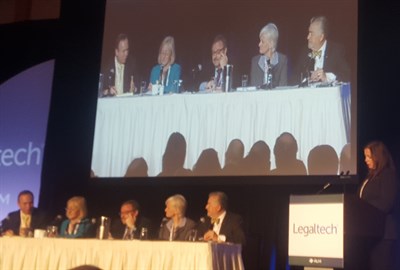fter spending three interesting days last week at LegalTech New York, the largest and most important legal technology event of the year, here is a first part of two with our reflections and summary from the event.
This event has more than 100 different exhibitors showing products to improve the legal business. The legal tech show is combined with keynote sessions and several seminars discussing legal technology, innovation and business development. Security was a big issue this year.
The keynote session introducing the conference was about how technology is being used in today’s court rooms and cases with a panel of five federal judges.
This could best be summarised with the comment made by Hon. Pamela Meade Sargent, magistrate judge at the U.S. District Court for the Western District of Virginia: “We’re really not seeing a lot of innovation in what we’re seeing in the courtroom yet. What we’re seeing is different ways of shuffling paper.”
On the theme security, one really interesting keynote speaker was the former FBI agent and lawyer Eric O’Neill talking about “Cybersecurity and data espionage: spy stories for lawyers”.
He gave us some insights regarding one of the first and most notorious new cyber-spies – Robert Hanssen – who had a 22-year long espionage career by exploiting computer systems security weaknesses. This spy was the inspiration of the Hollywood movie “Breach” 2007. O’Neill talked about how to restrain in social media to help minimize cyber-threats. Here is a report from his speech »
In a session regarding the evolution of Legal Technology there was a panel of three CIOs of bigger law firms who discussed the evolution by defining Legal Tech as 1.0, 2.0 and 3.0 whereas Legal Tech 1.0 was considered to be the basic IT structure- “Technology as a tool” – including Document Management, e-mails, extranets etc. Legal Tech 2.0 was described as a “Technology as an assistant” and included more cloud solutions, KM standards, more efficient search tools and Legal Project Management. This seemed to be where they were mainly focusing on today.
When looking further to the future they described Legal Tech 3.0 as “Technology as a collaborator” where technology is always engaged. This could be self-service solutions for the clients where clients can ask questions in natural language and they also mentioned Artificial Intelligence solutions based on IBM Watson, Ross and Azure machine learning.
The CIOs agreed on the importance of having lawyers with better knowledge of how technology is working, how the logic works and how the solutions are designed. We need lawyers with coding skills and lawyers with deep technology skills that can collaborate with technology to make efficient use of the tools.
In a session discussing the newest and coolest in legal technology, voice commands and google/skype translates was mentioned but one of the biggest changes in the legal sector was considered to be mobility and how this can change the need for law firm office space. These law firm representatives predicted that in the future, most lawyers will not have an office in the way we have today since that is the second biggest cost in law firms today. Instead we will have a more mobile workforce with more people working from a distance. Technology is needed to support this new way of remote working in an efficient way.
In the session “Law department management during a time of In-house Transformation” General Counsels discussed the possibilities to change the way legal work is being managed by outsourcing or using technology tools to focus on process efficiency since managing work and process efficiency was considered to be the most challenging tasks in their department.
As long as they are not forced by budget constraints, these General Counsels seemed reluctant towards such change due to the fear of delivering poor legal advice to the business.
One session was about “Pioneering law firms” with the two law firms Davis Wright Tremaine LLP (DWT) and Littler LLP presenting why they had received recognitions from ILTA´s 2015 Innovative Law Firm of the Year.
The law firm DWT have built in collaboration with clients to improve efficiency, create a more seamless working relationship and provide clients greater transparency into their legal matters and budgets. They exemplified with one case where they worked closely with a client to really support their contract management process. An important part of this work was to provide a number of metrics on the work being done in the different steps to make the legal work as transparent as possible.
An important aspect of this development was to really shift their focus and put the client at the centre.
The law firm Littler have developed several different solutions. When developing their solution for handling litigations in a more efficient way, the firm focused on dividing the process into different tasks and define different roles for lawyers handling these tasks.
This way they have been able to separate work into different career paths where strategic work is being handled by partners but other parts is handled by flexible lawyers working from home This has been combined with an automated workflow track and a virtual binder to keep track of all cases.
The firm Littler have also built a tool for labour and employment law – the “HR policy smart” – which, instead of providing lawyers with legal news, supports the lawyers in a more efficient way. All the HR policies from the client will be added into the tool. If there is any new legislation or other issue affecting an existing policy, the tool will suggest a change of the policy and send that information to the responsible lawyer. Instead of having lawyers analysing all news to see if they are affecting existing policies, this is done by the tool.
Besides these pioneering law firms, innovation could best be found amongst the exhibitors. Here are some examples:
- ArbiClaims has developed an online small claims alternative court. This way smaller claims can be quickly settled at a low cost.
- Legal Robot supports the contract analysis by translating a contract into natural language so the user will understand it and see what is important.
- Casetext is a tool for legal research where lawyers read legal texts annotated by peers in the legal community where you easily can add your own comments which makes it a powerful KM solution shared by the legal community.
- Hire an Esquire has a solution for on-demand legal workforce to support more flexible and on-demand work.
- SmartContract is a solution built on the blockchain technology where you can real-time monitor contract performance and add actions to the contract, such as payments when specific conditions are met.
- LitIQ supports drafting of legal documents by analysis the text to find ambiguities. It is a tool being used directly in word and can help proof-read the whole document and compare it so similar documents being produced earlier.
- Concord is a cloud-based contract platform where you can draft, negotiate, sign and execute a contract to support a better contract management.
- Legal.io has developed a platform for legal networks that can be used by legal service providers to collaborate with clients more effectively.
In the second part of the reporting from LegalTech NY we will add some more personal reflections and thoughts from the event and the changing legal market in general.

